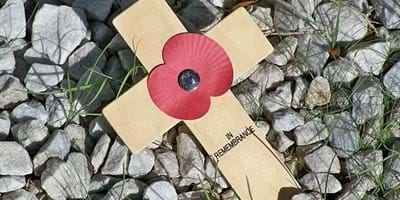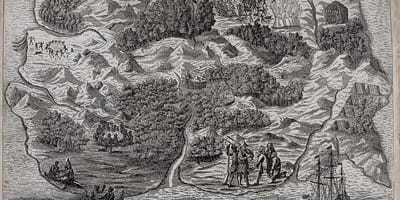Picture the scene: in the perfection of the garden of God, His creatures have rebelled against Him.
If you are unfamiliar with the God of the Bible, you might expect Him to behave like the gods of caricature, casting down lightning bolts in a vengeful rage. Or perhaps you would believe the claims of some religious people, that even though sin has come in, “God is love”, so He can’t, or won’t, punish it.
Neither of those views of God is presented in the Bible and surely that is the place to look to discover what God is like because it is in this book that He reveals Himself to us. In the Bible, we find a God who, because He is holy, must judge sin. Not in a capricious way, but in a way that is measured and in accordance with His just character. We also find a God who, because of His love and grace and mercy, has made a way for guilty sinners to be made right with Him.
In the verses quoted above, albeit in what may at first appear to be cryptic language, that is exactly what is displayed. The background is that God hasn’t come into this garden scene shouting accusations, He has come asking questions: firstly, “where are you?”, then, “have you eaten of the tree?”, and finally, “what is this that you have done?”. The first two questions are addressed to the man, Adam, and the last is addressed to Eve, his wife. These are searching questions, which slowly unravel the tragedy of the ages, that humanity has failed to take God at His word.
The final question provokes an answer which unveils the actions of this story’s real antagonist – Satan. We will learn much about this malicious character over the course of Bible history, even the mentioning of His name ‘Satan’ (the adversary) giving a flavour of what is to come. What he has done is going to become his signature tactic, casting doubt on the faithfulness of God.
It is into this scene that we have broken, and it is at this point that we read the verses quoted above. The judgement of God against sin is going to fall and fall heavily. The relationship between God and man has been fractured, husband and wife are now at variance, the joy of childbearing will be marked by pain, and the work which should have brought humanity fulfilment is forever cursed. Worst of all, death, a concept which has been foreign to creation until now, is introduced and all of humanity from this point forward is destined to die.
Often, as we read the account of Genesis 3 it is the above curses which catch our attention, stark as they are. As I read through the chapter though, there is something striking which precedes the judgements against humanity: it is the promise of a coming Saviour.
Called the “first promise of the gospel” by theologians, it gives us an insight into God’s great plan of salvation. Satan has introduced sin and death into the world, relationships have been ruined, and mortality has become a sad reality. God’s plan is to reverse all the effects of the “Fall”. Not by the wave of a hand or the speaking of a word, but by the sending of His Son.
There are some things to notice about this coming One. Firstly, He will come, unusually, as the “offspring of the woman”. The Hebrew word means “seed” and it is unusual for such language to be used of a woman. The implication is clear: here was a child who would be born without any male involvement. This would be reiterated in Isaiah 7:14: “. . . Behold, the virgin shall conceive and bear a son, and shall call his name Immanuel [God with us]”, and is seen clearly in the birth of the Lord Jesus Christ in the gospels. Secondly, He would inflict a devastating wound – ‘bruise your head’. There would be enmity for all of time between men and Satan. There would be a real conflict for the whole earthly life of the Lord Jesus between Him and Satan, but there would be a final, decisive battle on the cross and, at that place, Satan would be defeated. The writer to the Hebrews frames it beautifully when he says: “Since therefore the children share in flesh and blood, he himself likewise partook of the same things, that through death he might destroy the one who has the power of death, that is, the devil, and deliver all those who through fear of death were subject to lifelong slavery” (Hebrews 2:14-15 ESV).
Thirdly, it would involve the seed of the woman receiving a wound Himself. This is a plan which seems counterintuitive; why would He come knowing that He was certain to be wounded in the fight? He would come because that is the only way for the justice of God to be satisfied. It was “through death”, as we have seen above, that He would destroy him who had “the power of death”. This was the purpose of the cross. It was not a simple act of gratuitous violence; it was a calculated act by the God of heaven to defeat Satan once and for all. More than that, it was by passing through death, never to die again, that Christ would give the hope of eternal life to those who trust in Him. His heel was to be bruised, and the wound would be both deep and painful, but it was not permanently fatal. In fact, the One who received it would later announce that He is: “the living one. I died, and behold I am alive forevermore” (Revelation 1:18 ESV).
There is nothing in this world more important than that you would recognise the significance of these words and trust the Saviour of whom they speak today.
As we begin this series of articles, “we would see Jesus” – seed of the woman.
“Verily God, yet become truly human,
Lower than angels to die in our stead;
How has that long promised “Seed of the woman”
Trod on the serpent and bruised his head!”































